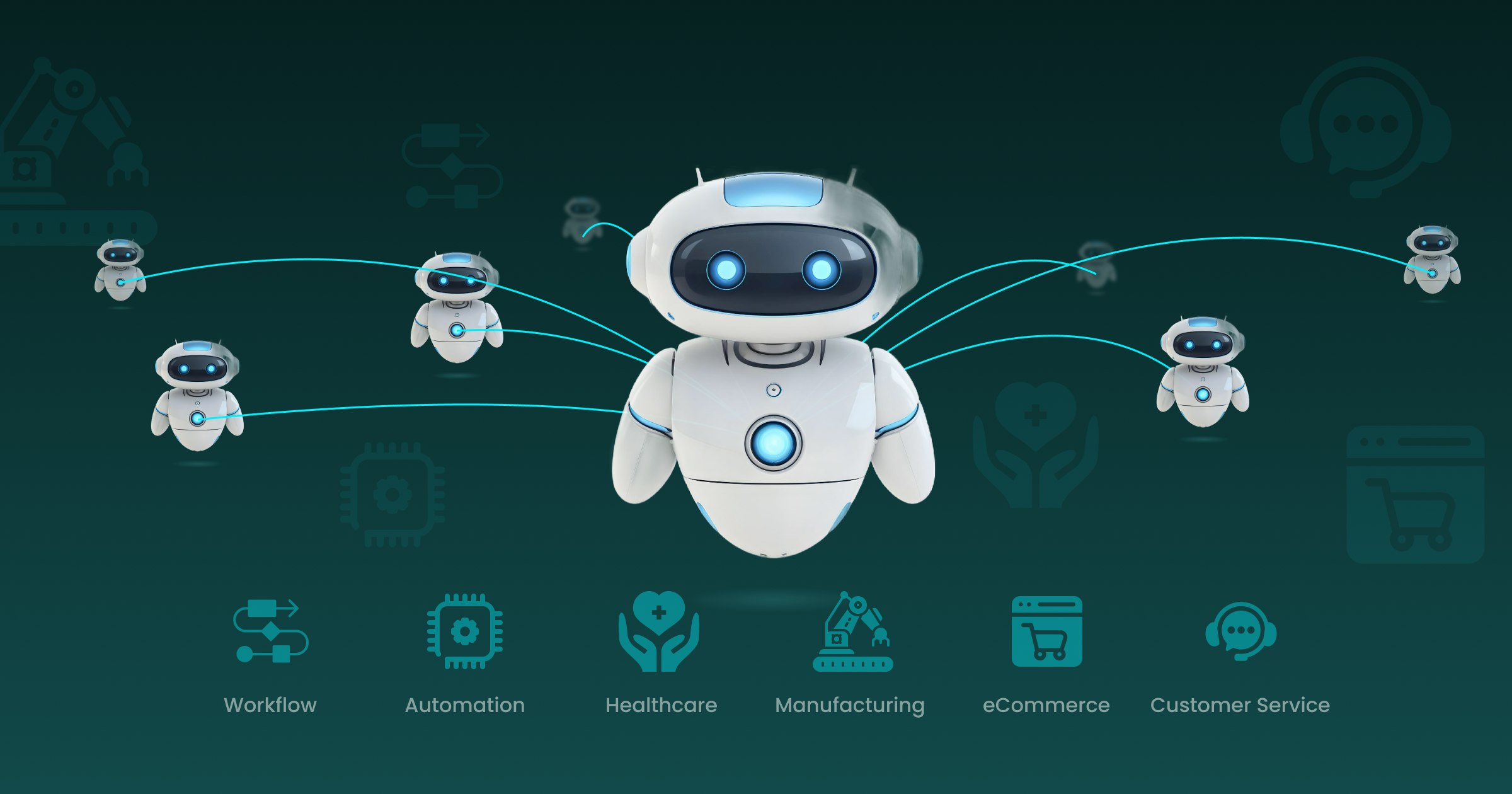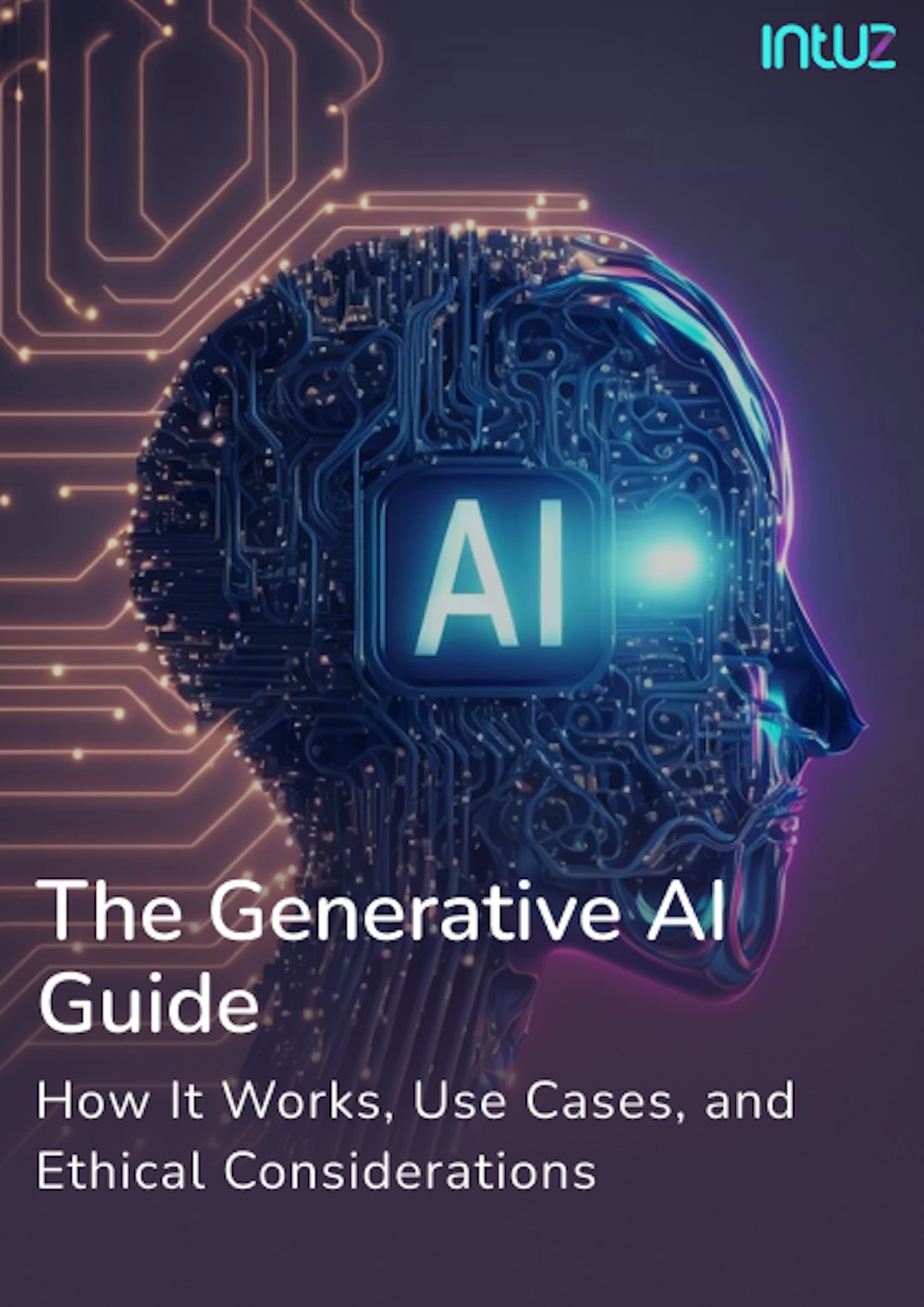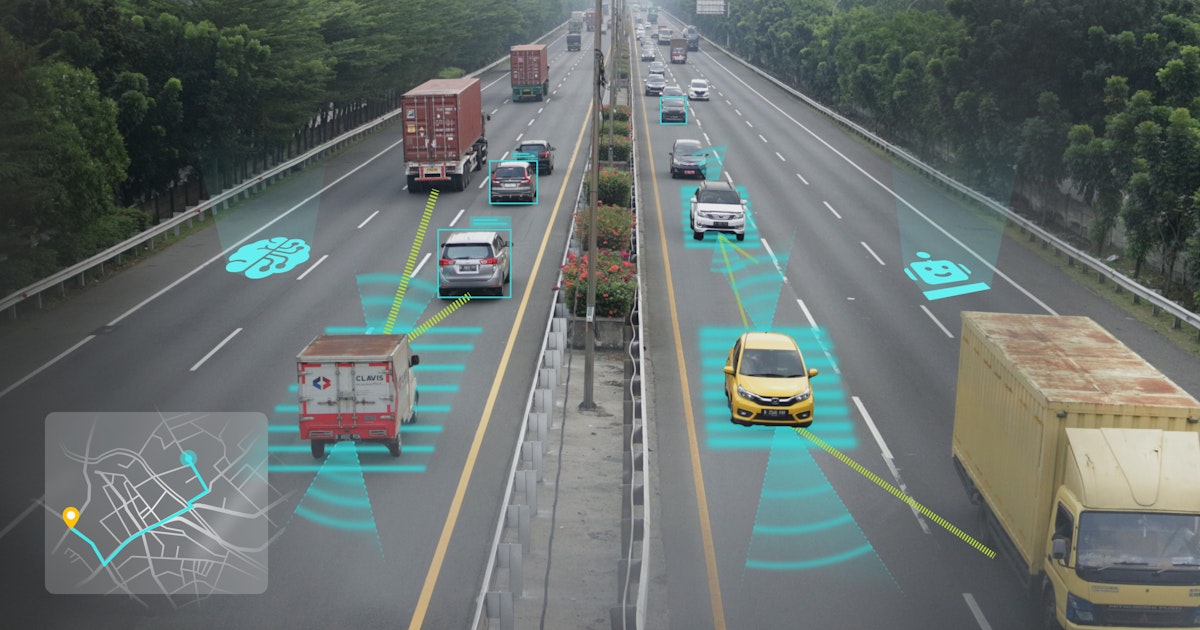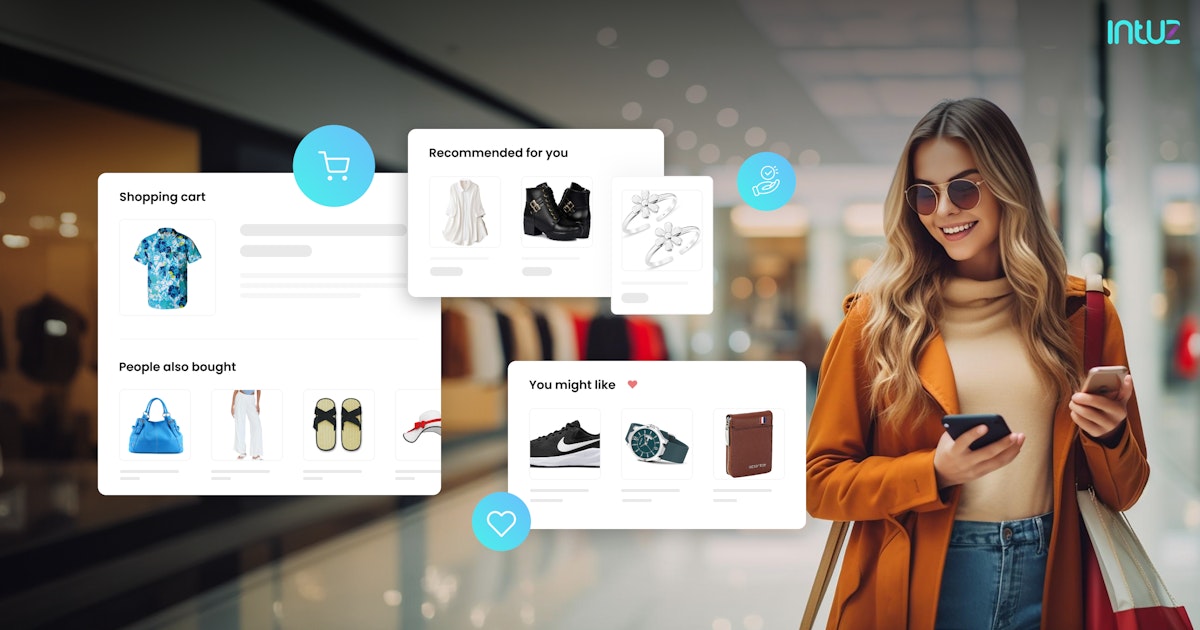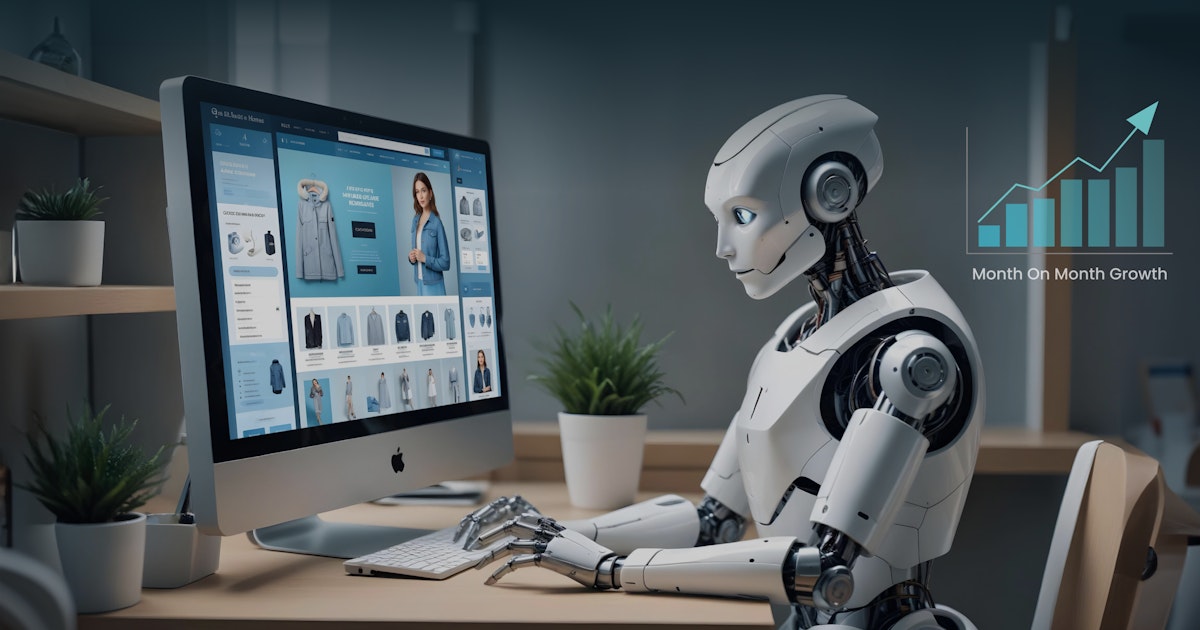Table of Content
Remember the days when technology simply followed your instructions? From inputting the exact address of your destination in the GPS device to setting up email filters in services like Microsoft Outlook to creating playlists on the iPod—the pre-programmed tasks were a breeze to handle.
But now, with the rise of new and powerful large language models (LLMs) and foundational model architectures, Artificial Intelligence (AI) has taken the guise of a trusted advisor—with an innate ability to understand your environment, set objectives, and autonomously work towards them.
What’s more—“AI agents” or "Autonomous agents" and “agentic workflows” can take our AI experience to a whole new level. In this guide, we’ll study the two concepts in detail, including their use cases and benefits across industries.
We’ll also explore steps to implement AI agents into enterprise systems. Buckle up—this is going to be one insightful read.
What is an AI agent?
An AI agent is a software entity that can autonomously perform complex tasks, make decisions, and interact with human users and other systems. It does so by perceiving its environment through sensors, processing the information gathered, and acting upon it to achieve specific organizational goals.
Unlike traditional automation tools, which follow predefined rules and scripts and generate a single output from a given prompt, an AI intelligent agent can learn from interactions and improve over time.
It can also handle complex, dynamic tasks in unpredictable environments—without direct human intervention. On the other hand, traditional systems demand significant human oversight despite undertaking only specific, repetitive tasks in controlled environments.
Types of AI agents
1. Goal-based agents
These act to achieve complex goals by considering future consequences of their actions, like a chess player planning their move. A robotic vacuum cleaner that plans the most efficient cleaning route to cover the entire floor is an example of a goal-based agent.
2. Hierarchical agents
They’re a type of multi-agent collaboration system or multi-agent systems where decisions are taken at multiple stages. Each stage handles a different part of problem-solving, with higher agents guiding and controlling agents at the bottom of the hierarchy.
Hierarchical agents are helpful in manufacturing and regulated industries where oversight of workflows is essential to prevent undesired outcomes, such as loss of life.
3. Simple reflex agents
These agents react directly to stimuli from the environment based on a set of predefined rules or learned patterns. They have no memory of past events or actions. Think of a thermostat adjusting the temperature based on the current room temperature—that’s a simple reflex agent.
Transform Your Operations with AI Agentic Workflows!
Explore AI Services4. Utility-based agents
These are similar to goal-based agents, but they make decisions that maximize a utility function in addition to achieving a goal.
A financial trading bot that optimizes investment decisions and balances client preferences to maximize ROI while minimizing risks is an example of a utility-based agent.
5. Model-based reflex agents
These agents maintain an internal model of the environment to make data-driven decisions or predict future outcomes based on historical and current data. For example, self-driving cars use sensors and mapping data to navigate roads. Model-based reflex agents are a sophisticated version of simple reflex agents.
What is an AI agentic workflow?
An AI agentic workflow refers to a sequence of tasks or processes carried out autonomously by AI agents. It takes an iterative, interactive AI development approach where the agents engage in a dynamic and self-reflective process involving:
- Data gathering and processing from the environment or specific inputs
- Data analysis to make informed decisions
- Performance improvement via adaptive learning from outcomes or constructive feedback mechanism
For example, in an eCommerce setting, an AI-powered customer service rep handles order inquiries by greeting a customer and requesting their order number. It then retrieves the order status from the database and informs the customer, providing tracking information if available.
In a traditional non-agentic workflow process, the AI model generates output in a single pass by following static processes. It relies on simple, rule-based logic and often requires manual adjustments.
Technologies used in agentic workflow
There are six technologies in motion here:
- Sensors supply real-time data from the physical environment
- Computer vision enables AI agents to interpret and process visual information from the environment
- Cloud computing offers scalable computing power and storage for AI applications
- Machine Learning (ML) equips AI agents to learn from data and improve their performance with time
- Robotic Process Automation (RPA) automates repetitive tasks and processes
- Natural Language Processing (NLP) helps AI agents to understand and interact using human language.
Industry-specific use cases of AI agentic workflows
1. E-commerce
Every online business wants to operate more efficiently and deliver exceptional customer service. If you’re in the eCommerce space, leverage AI agentic workflows.
For starters, you can gain deep critical data insights into customer preferences, purchasing patterns, and browsing behavior by collecting and analyzing data from various touchpoints, such as the website, mobile app, and social media.
This helps personalize your offerings and engage your target audience more meaningfully. You can also initiate AI-powered dynamic pricing—adjusting prices in real-time to maximize sales when demand is high—or offer discounts and deals that are more likely to resonate with your customers.
Secondly, AI algorithms can suggest products based on individual buyer preferences, increasing the likelihood of purchase. Amazon first popularized the concept of personalized product recommendations. Now, you can apply the same technology to your eCommerce store.
Inventory management is another critical area where AI agentic workflows shine. Predictive analytics can accurately forecast product demand, allowing you to automate the restocking process so that you never overstock and run out of stock.
2. Healthcare
The COVID-19 pandemic changed the way we perceive taking care of our health. Naturally, AI agentic workflows are handy in transforming patient care as they help healthcare industries achieve faster and more accurate diagnoses and even identify potential health risks.
Advanced AI algorithms enable a comprehensive view of patient health by gathering and analyzing vast amounts of patient data from various sources, such as:
- Electronic Health Records (EHRs)
- Wearable devices
- Medical imaging
- Past illnesses
- Lifestyle
- Genetics
With such robust data, AI can predict which patients are at higher risk for conditions such as heart disease, diabetes, or even mental health issues. That means healthcare providers intervene early, potentially saving lives and reducing healthcare costs.
Plus, the treatment efficacy gets a boost because of tailored treatment recommendations, ensuring a higher success rate in treatments and better patient outcomes.
Then, there’s the rise of continuous monitoring systems powered by AI that can track vital signs, medication adherence, and other health indicators in real time. These intelligent systems can alert healthcare providers to any concerning changes, allowing for immediate intervention.
Finally, AI agents can efficiently handle scheduling appointments, maintaining patient records, billing, processing insurance claims, and patient follow-ups.
3. HR management
With the recession very much in the picture, businesses must more consciously attract, manage, and retain talent. Thankfully, AI-driven resume screening and interviews offer a headway in this regard.
With AI, you can quickly and accurately sift through large volumes of resumes, analyzing specific keywords, experience levels, and skills, to identify the most qualified candidates. This minimizes the time and effort required for initial candidate screening.
Next, AI-powered interview bots can conduct preliminary interviews, assess candidate responses, and provide insights that further help streamline recruitment.
AI agents can also ensure a practical and engaging onboarding experience. By analyzing an employee’s background, role requirements, and performance data, they can recommend specific training modules and resources unique to each new hire’s learning style.
Real-time performance tracking and reviews are made more efficient through AI agentic workflows. With them, it’s easy to continuously monitor employee performance and provide timely feedback by analyzing data from various sources.
Additionally, AI can assist in conducting performance reviews by compiling comprehensive reports and identifying areas for continuous improvement. Employee sentiment analysis and personalized engagement initiatives are critical for maintaining a positive workplace culture.
AI can analyze employee feedback to gauge overall sentiment and recommend personalized engagement initiatives tailored to individual employees, fostering a supportive and motivating work environment.
4. Customer support/service
Today’s customers expect immediate assistance from the business, regardless of time zones. A Salesforce study reports that 64% of customers expect real-time responses!
With AI agents, increasing customer satisfaction rates by 35% is possible. For example, they can handle the initial contact, triaging customer queries based on their nature (e.g., billing, technical support, and product information) and urgency.
This automated issue categorization and prioritization ensures each inquiry is directed to the appropriate channel or team member for a prompt response. Plus, high-priority issues get handled swiftly and effectively.
Another area where AI shines is in issue resolution or escalation. AI-driven chatbots can resolve simple and repetitive queries instantly. However, the AI-driven customer service chatbot escalates the inquiry to a human agent for more complex issues, providing them with context to resolve the issue.
Additionally, AI can automate follow-up communications and facilitate customer feedback collection through surveys and sentiment analysis, refining their responses and support processes over time.
5. Manufacturing and supply chain
As we explored previously, AI agents can optimize inventory levels through accurate demand forecasting. They can also evaluate supplier performance based on criteria such as price, quality, and delivery times and automatically select the best suppliers for your needs.
Once suppliers are chosen, the ordering process can be automated, generating purchase orders and tracking their status in real-time. Want to make your product schedules more efficient? No problem.
You can use AI agents to analyze production requirements, machine availability, and workforce capacity to create and adjust schedules based on real-time data and changes in demand—ones that maximize productivity and minimize downtime.
Quality control and predictive maintenance are critical areas where AI agentic workflows substantially impact. AI-driven quality control systems can inspect products for defects more accurately and consistently than human inspectors, ensuring high standards are maintained.
Predictive maintenance also uses AI to monitor equipment performance over time and predict potential failures before they occur. Lastly, AI enables logistics and distribution management by optimizing route planning—you can deliver faster and more reliable deliveries while reducing transportation costs.
Benefits of AI agentic workflows in business
1. Increased efficiency
By automating complex end-to-end workflows and connecting them to external systems and software, AI agents can automate repetitive tasks, significantly improving operational efficiency.
For example, chatbots can handle up to 80% of routine customer inquiries, allowing human agents to look after complex issues. This arrangement results in faster response times and enables you to scale your operations by up to 40% without proportional increases in staffing costs.
2. Data-driven insights
Because AI agentic workflows collect and analyze vast amounts of data, they can gain valuable insights into customer behavior and preferences. The result is more personalized and effective customer engagement.
McKinsey reports that businesses that invest in AI-based marketing strategies see a revenue uplift of 3%-15% and a sales ROI increase of 10%-20%.
3. Optimized operations
Agentic AI responds dynamically to shifting market conditions. This helps your business optimize operations across various departments in real-time, such as HR, finance, content marketing, IT, and so on.
When everything runs like a well-oiled machine, meaning routine tasks are automated, employees can dedicate more time to strategic initiatives. This helps foster a more innovative and self-driven workforce.
How to implement an AI agentic workflow in your business
AI agentic workflow deployment typically comprises a series of manageable steps, let's deep dive into each step.
1. Evaluate current workflows
The first step is obvious: thoroughly assess your current workflows, no matter how traditional or modern. Note areas where AI automation offers significant benefits, such as reducing costs, boosting efficiency, and improving accuracy.
On the other hand, look for repetitive, time-consuming tasks that can be automated. For example, your current workflow may involve manually sorting and responding to hundreds of emails or chat messages daily, which can drain your resources.
With an AI-powered chatbot, you can at least automate filtering emails based on relevance, urgency, and the initial response.
2. Data collection and processing
Data is the foundation of AI. Irrespective of your business nature and industry, you’d gather and analyze transactional data, CRM databases, operational metrics, customer interactions, and so on.
But to make the most of your data, you must ensure it’s clean, accurate (with no duplicates), and properly formatted. Here, using the ETL (Extract, Transform, Load) process to organize and structure it with tools like Talend or Apache Spark can help.
3. Select appropriate AI technologies
For the AI agentic workflow to perform the desired tasks accurately, you must take support of superior AI technologies that align with various needs, from language processing powerful tools to computer vision.
For example, you may need assistance with automating invoice processing.
For this, you’ll need a combination of Optical Character Recognition (OCR) to scan and extract text from invoices and convert it into digital data and RPA to automatically input the data into your accounting software, validate it, and handle any discrepancies.
Therefore, research about different AI models and tools is based on factors such as scalability, ease of integration, customer support, learning curve, and pricing. Contact AI experts or vendors to learn more about how a specific solution can help you.
4. Agent training and testing
Once the AI technologies are selected, the next step is to train your AI agents using the collected data from #2.
It’s important to run extensive testing to validate the performance of AI agents. You can do so by simulating real-world scenarios and measuring their accuracy, efficiency, and reliability in performing their tasks.
For example, if you want to implement an AI agentic workflow for marketing campaign management, you’d train the model using data from past campaigns, covering metrics like conversion rates, customer engagement statistics, and demographic information.
For batch simulation execution, you could set up a mock campaign targeting a specific customer segment and measure how effectively AI allocates budget, optimizes ad placements, and predicts overall campaign success. This helps address potential issues before full-scale implementation.
5. Integrate agents into the workflow
Next, integrate AI tools with your current systems and business processes. Ensure this step is seamless and that the AI agents interact with other software and databases without glitches or hassle. Cross-functional collaboration between your department and the IT team will help make this phase a success.
6. Monitor and evaluate
Your job doesn’t end with integration. You must question yourself: How positively is the AI agentic workflow impacting my business objectives and KPIs?
For maximum value delivery and to adapt to the ever-evolving business environment, it’s important to continuously monitor the performance of AI agents and make necessary adjustments and iterative improvements.
Let's Automate Your Business Processes with AI Agent!
Let's Get StartedMeet Intuz: Your partner for AI agent-driven automation solutions
As a company that prides itself on being at the forefront of advanced AI and automation technologies, we know that AI agentic workflows represent a massive leap in this space.
No matter your role or industry, you can create an efficient environment using AI agents with our help. What you need is a bespoke AI and automation strategy that works. Fret not— we can develop custom advanced AI solutions that align perfectly with your specific requirements.
With decades-long experience, our AI team will take the time to understand your technical complex challenges, goals, and operational nuances.
We’ll also share a complimentary roadmap to show you the development steps clearly—we believe in delivering tangible results.
Book a free consultation with our AI experts today and get started.
